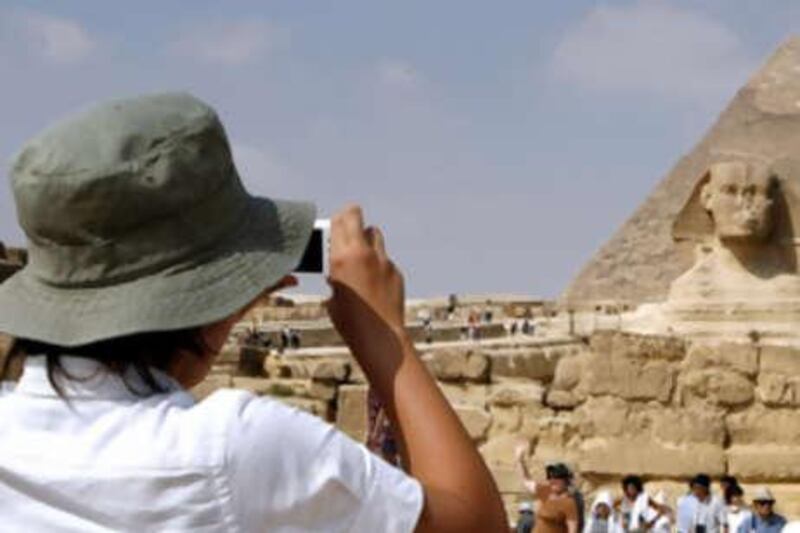At the site of the Great Pyramids in Egypt, the scheme to part tourists from dignity and cash starts well before the ticket gates. A frequent Cairo taxi scam is to hijack first-time visitors and drop them instead at some distant stable offering horseback and camel rides, where the driver receives a commission. Instruct your taxi to head directly to one of the two official Giza Plateau ticket booths. One is located just north of the three main pyramids up the hill from the entrance to the Mena House Hotel. The other sits in front of the Sphinx by the Sound and Light Show.
After you buy your general admissions ticket (50 Egyptian pounds; visits to the Solar Boat Museum or the interior Cheop's Pyramid cost extra), postcard vendors and freelance guides, as well as old fashioned horse-drawn carts, and boys and men on horses and camels will all approach inquiring if you want their services. Using traditional transportation is not a bad idea, especially on hot days, because the grounds are extensive, but if you'd rather be left in peace, a firm, repeated "No thank-you" redirects touts to the next mark.
A photo of yourself on a camel with the Great Pyramid as a backdrop is best arranged in the car park just in front of the smaller Pyramid of Menkaure. Don't accept "As you like" for a price. Bargain and expect that you will pay at least five Egyptian pounds to take a photo of a camel without getting on it, ten pounds for a photo taken by the driver of yourself sitting atop of a camel, 20 pounds for a photo and a short 10-minute ride from the Pyramids to the Sphinx, and 60 pounds for a ride of one hour that circles around the complex.
Make sure to specify local Egyptian currency in advance; sometimes a cameleer will agree to a figure and later reveal that he wants euros or dollars. Don't dismount in an isolated spot but near groups of people or a tourist police officer who can mediate a price dispute. Inevitably you will be asked for more money than originally agreed on because the ride has been longer, hotter and more troublesome, according to the poor camel driver walking beside you in the hot sand making sure "Paris Hilton," "Posh Spice," or "Cleopatra" doesn't spit on you.
Some drivers are more charming than others, but all assume that anyone willing to travel to Egypt in order to ride a camel must have a big wallet and a fun-loving spirit. But don't get so hung up on small sums that you fail to appreciate a friendly, multilingual, and culturally-savvy comedian. If a sunset or sunrise photo is on your agenda, be aware that Giza Plateau officially closes between dusk and dawn for security reasons. However nothing is impossible in Egypt.
Once the general admissions booths close in late afternoon, ticket sellers and guards at the Sound and Light stage will invite you through the ropes before the first show to take a quick photo of the sun setting behind the Sphinx (in exchange for a tip of a few pounds, of course). Of the many horse and camel operations in the adjacent village of Nazlet El Seman, FB Stables has been serving expats for 40 years; owner Farouk Breesh is a reliable supplier of mounts and guides, can evade the guards, and knows good sunrise and sunset vantage points.





